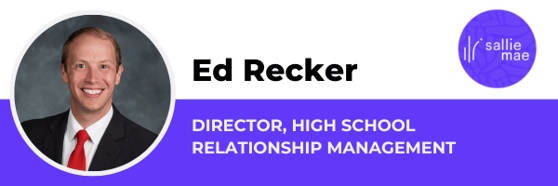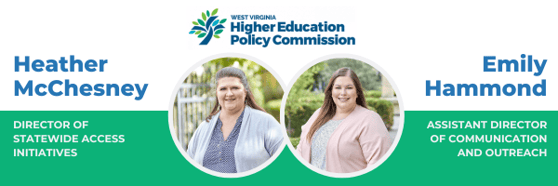|
Volume 9, Issue 1 – February 2025
|
|
Director’s Note
Dear friends,
We’ve already entered the second month of the new year — what I hope has been a positive, enlightening, and exciting year so far. Let’s ensure we keep the positive momentum by supporting students as they make big decisions about where they’ll choose to attend and what actions are required before the school year ends.
This month, we will be working diligently to gather final data from the 2024 state campaigns to be ready to announce national results this spring. If you haven’t already submitted your data to your state coordinator, please do so to be included when the national results are published. We’re excited to see how all your hard work shaped out and eager to see what learnings we find for this year.
National School Counseling Week is in full swing, an opportunity to recognize and celebrate the outstanding and meaningful work of school counselors. Their efforts are integral in helping students feel supported and prepared for what lies ahead. Be sure to honor the counselors at your school this week using #NSCW25 on your social channels.
Wishing everyone a successful February and continued progress in the months ahead.
|
|
With gratitude,
Lisa King, director
|
|
Driving Student Success Forward – The Evolution of the Financial Aid Offer
By: Ed Recker, director, high school relationship management, Sallie Mae
The start of the new year brings a new beginning and, for millions of students, the prospect of attending college or university. Admissions decisions have been rendered for the majority, leaving the next element of the college decision process to come: the financial aid offer.
Historically, individual schools have determined the layout and content of financial aid offers. While this is largely the case, a recent flurry of activity has prompted many schools to revisit what information they include and how their offers are presented. On Dec. 5, 2022, the U.S. Government Accountability Office (GAO) released a report outlining the findings of a financial aid offers study based on a representative sample of 522 financial aid offers from 176 colleges.
Some notable findings included:
- An estimated 91% of respondents understated or did not include the net price.
- 46% of respondents subtracted more than just gift aid (scholarships and grants) to estimate a net price, meaning some respondents were subtracting student loans, Federal Parent PLUS Loans, and Federal Work Study awards when calculating their net price. This distinction is important because students and parents may mistakenly assume that all the items listed on the award are free money that doesn’t need to be paid back or that taking out loans is necessary.
- 31% of respondents included Federal Parent PLUS Loans in their aid offers, and 21% did not list key details about how they differ from student loans. A Parent PLUS Loan is a credit-based loan for parents: it requires an additional application and the parent, not the student, is legally responsible for repaying the loan.
On a positive note, 85% of respondents provided important visual cues, such as naming methodologies like “loan,” “grant,” or “scholarship” to each award, but most did not categorize aid types separately.
In response to the study, the GAO developed 10 best practices for schools to follow when presenting financial aid offers to prospective enrollees:
- Itemize key direct and indirect costs.
- Provide a total cost of attendance (COA) that includes key costs.
- Estimate the net price.
- Separate gift aid, loans, and work-study.
- Highlight key details and distinctions about loans, grants, and work-study.
- Do not include a Parent PLUS Loan or, if included, separate and differentiate it from student loans.
- Label type of aid.
- Label source of aid.
- Include actionable next steps.
- Do not refer to the offer as an “award.”
Based on the study’s outcomes, 10 higher education associations formed the College Cost Transparency Initiative to improve the clarity, accuracy, and understanding of financial aid offers. The Initiative’s principles and standards mirror the GAO’s recommendations while still allowing participants some flexibility in layout and branding. To date, 649 institutions have joined the Initiative, representing approximately 15% of the institutions eligible for federal aid.
While these efforts represent significant progress, students and families still need guidance in understanding the different aid types, what they mean, and how they impact the actual cost of college. Sallie Mae provides two valuable, free resources:
Best wishes as we embark on a new year; thank you for all you do!
|
 |
|
Personalized College and Career Counseling in West Virginia: A Statewide Effort to Empower Students, Families, and School Communities
By: Heather McChesney, director of statewide access initiatives, West Virginia Higher Education Policy Commission and Emily Hammond, assistant director of communication and outreach
The West Virginia Higher Education Policy Commission has made significant strides in helping students and their families navigate the often-daunting college application and career planning process. Through its comprehensive initiatives, West Virginia provides personalized college and career counseling, inspiring students statewide to succeed. One of the cornerstone programs driving this engagement is the West Virginia Champions for College Access and Success Initiative. This initiative challenges schools to meet three essential milestones: College Application & Exploration Week, a Free Application for Federal Student Aid (FAFSA) Completion Campaign, and College Decision Day. Each milestone guides students, families, and school personnel through the pivotal steps in the transition to college. For each milestone event, the West Virginia Higher Education Policy Commission provides annually updated event toolkits that cater to the unique needs of West Virginia’s schools and communities. The toolkits include helpful assets for hosting school events, templates for event flyers, social media posts, printable informational one-pagers for students and families, and links to helpful state resources.
Given the state’s predominantly rural population, personalized and targeted outreach is critical in ensuring equitable access to college and career planning resources like financial aid planning information, FAFSA guides, test prep, career exploration tools, and more. In addition to the Champions for College Access and Success milestones, West Virginia leverages its Text-4-Success program to connect directly with students. This program offers a user-friendly platform where students can receive personalized college counseling through their phones. With Text-4-Success, students not only get timely reminders about important deadlines, like FAFSA submissions and financial aid application due dates but they can also directly message counselors with their questions. This two-way communication fosters trust and reduces the anxiety many students and their families feel during the college transition process, particularly in rural areas where resources can be limited.
Another essential asset in West Virginia’s comprehensive approach to college and career counseling is the College for West Virginia website, CFWV.com. This free, one-stop resource offers tools and articles customized to West Virginians, guiding them on everything from financial aid to career exploration with state-specific details and requirements. Schools and districts can use CFWV.com to expand their advising efforts, ensuring students and families can access reliable, localized information. This underscores West Virginia’s commitment to making higher education accessible and achievable for all its students.
One shining example of the success of these programs is Spring Valley High School, the most recent recipient of the American College Application Campaign (ACAC) School of Excellence Award. Spring Valley fully embraced the Champions for College Access and Success milestones, decorating the school with college and career information, hosting engaging events, such as family nights and financial aid workshops during College Application & Exploration Week, and achieving high levels of FAFSA completion among its students. The school also integrated additional state resources, such as the Text-4-Success program, to provide tailored support for students and families. By leveraging these tools, Spring Valley increased college-going rates among its students and built a culture of trust and confidence in higher education in its school community.
Personalized student outreach initiatives, like those championed by the West Virginia Higher Education Policy Commission, are particularly effective in rural populations, where trust and accessibility play a significant role in educational outcomes. By offering hands-on support and engaging students and their families, these programs demystify the college-going experience and create a supportive environment where students feel empowered to pursue their dreams and achieve success through higher education.
|
 |
|
National School Counseling Week
National School Counseling Week is underway through Feb. 7. This year’s theme is “School Counseling: Helping Students Thrive.” Get ready to participate in the photo and video challenge before the week ends with new prompts each day. It's not too late to highlight the outstanding contributions of school counselors and the role they play in helping students achieve success.
Download and share the easy-to-use and customized materials in the #NSCW25 toolkit to promote the campaign celebrations.
|
 |
|
National Association for College Admission Counseling
NACAC is hosting three virtual college fairs this year to execute college matchmaking for students, highlighting campus size, campus setting, majors offered, institution type, and geographic region. Once registered, students will have a mimicked in-person experience of being onsite at a college fair for each school they were matched with, such as visiting school booths, one-on-one chatting, reviewing live and prerecorded sessions, and more.
Registration for each fair is below:
|
|
Webinar: Unlocking the Power and Potential of All Learners
More than 70 million U.S. workers are Skilled Through Alternative Routes (STARs) — gaining expertise through on-the-job experience, military service, community college, workforce training, and more. These STARs represent a diverse and untapped talent pool ready to shape the future.
As part of ACT’s Equity Speaker Series, LaShana Lewis, technology leader, diversity advocate, and Chair of the STARs Advisory Council at Opportunity@Work, will share her journey and provide actionable insights to cultivate inclusive environments where every individual’s talent is recognized and celebrated.
Wednesday, Feb. 19, at noon E.T.
Register here.
|
|
ACT Update
Beginning April 2025, students who choose to take the ACT online will see an updated format that’s shorter and lets them choose whether to include the science section, allowing for greater flexibility while maintaining the accuracy and reliability colleges rely on. These changes will also apply to the paper-pencil test starting September 2025. The Composite score will now focus on English, math, and reading, while science scores will be reported separately for those who take it.
Learn more about ACT enhancements for a better student experience here.
|
|
©2025 by ACT Education Corp. All rights reserved.
|
|